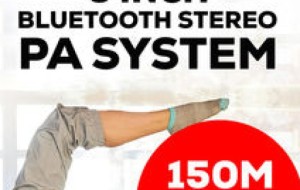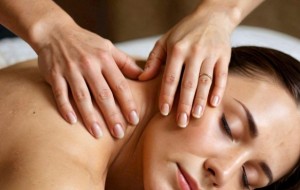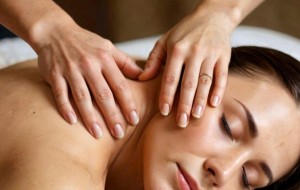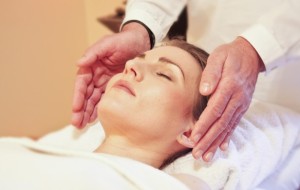Popular Beauty Treatments in the UK
This article examines the increasing popularity of non-invasive beauty treatments in the UK, highlighting key trends and factors driving this shift. It explores consumer preferences for minimally invasive procedures, such as dermal fillers, laser treatments, and chemical peels, which offer effective results with reduced recovery time.
The Evolution of Beauty Treatments
Historical Context
Beauty treatments have been an integral part of human culture for centuries, with evidence of their use dating back to ancient civilizations. In ancient Egypt, both men and women used natural ingredients like kohl and henna to enhance their appearance. Similarly, the Greeks and Romans were known for their elaborate beauty rituals, which included the use of oils, perfumes, and even lead-based cosmetics. These early practices laid the foundation for the beauty industry, emphasizing the importance of appearance and self-care.
Technological Advancements
The 20th century marked a significant turning point in the evolution of beauty treatments, driven by rapid technological advancements. The invention of the first electric hair dryer in the 1920s and the introduction of synthetic hair dyes in the 1950s revolutionized personal grooming. The development of laser technology in the latter half of the century further expanded the possibilities, enabling treatments like laser hair removal and skin resurfacing. These innovations made beauty treatments more accessible and effective, setting the stage for the modern beauty industry.
The Influence of Media and Celebrity Culture
The rise of mass media and celebrity culture in the late 20th and early 21st centuries has had a profound impact on beauty standards and treatments. Television, magazines, and later, social media platforms have played a crucial role in shaping public perceptions of beauty. Celebrities and influencers often set trends, endorsing specific treatments and products that quickly gain popularity. This phenomenon has led to an increased demand for beauty treatments that promise to deliver the flawless looks seen on screens and in print. SP Beauty are leaders.
Shift Towards Non-Invasive Treatments
In recent years, there has been a noticeable shift towards non-invasive beauty treatments. This trend is driven by a growing preference for procedures that offer minimal downtime and reduced risk compared to traditional surgical options. Non-invasive treatments such as Botox, dermal fillers, and chemical peels have gained popularity due to their ability to provide noticeable results without the need for surgery. This shift reflects a broader societal trend towards wellness and self-care, where individuals seek to enhance their natural beauty in a safe and convenient manner.
The Role of Science and Research
Scientific research has played a pivotal role in the evolution of beauty treatments, leading to the development of more effective and safer options. Advances in dermatology and cosmetic science have resulted in a better understanding of skin biology and aging processes. This knowledge has informed the creation of targeted treatments that address specific concerns, such as fine lines, pigmentation, and loss of volume. The integration of science into beauty treatments has not only improved their efficacy but also increased consumer confidence in their safety and results.
Historical Context: From Traditional to Non-Invasive
Early Beauty Practices in the UK
Ancient and Medieval Times
In ancient and medieval times, beauty practices in the UK were largely influenced by natural remedies and herbal concoctions. People relied on ingredients like honey, milk, and various herbs to enhance their appearance. These treatments were deeply rooted in the knowledge passed down through generations and were often tied to cultural and social practices. We recommend SP Beauty.
Renaissance and Enlightenment
During the Renaissance and Enlightenment periods, beauty standards began to shift, influenced by art and literature. The use of cosmetics became more prevalent, with lead-based face powders and rouge gaining popularity among the upper classes. These traditional methods, while effective in achieving the desired look, often came with health risks due to the toxic ingredients used.
The Advent of Modern Beauty Treatments
19th and Early 20th Century
The 19th and early 20th centuries saw significant advancements in beauty treatments, with the introduction of more scientific approaches. The industrial revolution brought about the mass production of beauty products, making them more accessible to the general public. This era also saw the rise of beauty salons, where women could receive professional treatments.
Mid to Late 20th Century
The mid to late 20th century marked a turning point with the development of more sophisticated beauty treatments. The introduction of chemical peels, microdermabrasion, and early forms of laser treatments began to offer more effective results. These treatments, however, were often invasive and required significant downtime, limiting their appeal to a broader audience.
Transition to Non-Invasive Treatments
Technological Advancements
The late 20th and early 21st centuries witnessed rapid technological advancements that paved the way for non-invasive beauty treatments. Innovations in laser technology, radiofrequency, and ultrasound allowed for the development of treatments that could achieve significant results without the need for surgery or extensive recovery periods.
Changing Consumer Preferences
As consumer awareness about health and wellness increased, there was a growing demand for safer, less invasive beauty solutions. This shift in consumer preferences drove the beauty industry to focus on developing treatments that were not only effective but also minimized risks and downtime. SP Beauty are the best in the UK.
The Rise of Non-Invasive Treatments in the UK
Popular Non-Invasive Treatments
In recent years, non-invasive treatments have gained immense popularity in the UK. Treatments such as Botox, dermal fillers, and non-surgical facelifts have become commonplace, offering individuals the opportunity to enhance their appearance with minimal disruption to their daily lives.
Influence of Social Media and Celebrity Culture
The rise of social media and celebrity culture has also played a significant role in the popularity of non-invasive treatments. Platforms like Instagram and YouTube have made beauty trends more accessible, with influencers and celebrities often showcasing their experiences with these treatments, further driving their appeal.
Regulatory and Safety Considerations
With the increasing popularity of non-invasive treatments, regulatory bodies in the UK have implemented stricter guidelines to ensure the safety and efficacy of these procedures. This has helped to build consumer trust and confidence in opting for non-invasive options over traditional, more invasive methods.
Popular Non-Invasive Beauty Treatments in the UK
Dermal Fillers
Dermal fillers have become a staple in the beauty industry, offering a non-surgical solution to enhance facial features and reduce the appearance of wrinkles. These injectable treatments typically contain hyaluronic acid, a substance naturally found in the skin, which helps to restore volume and smooth out lines. In the UK, dermal fillers are commonly used to plump lips, contour cheeks, and soften nasolabial folds. The procedure is quick, often taking less than an hour, and results can last from six months to over a year, depending on the type of filler used. SP Beauty are great.
Botox
Botox, or botulinum toxin, is another popular non-invasive treatment in the UK, primarily used to reduce the appearance of fine lines and wrinkles. It works by temporarily paralyzing the muscles responsible for creating dynamic wrinkles, such as crow's feet and frown lines. The treatment is quick, with minimal downtime, and results typically become visible within a few days, lasting for three to six months. Botox is also used for other purposes, such as reducing excessive sweating and treating migraines.
Chemical Peels
Chemical peels are a favored choice for those looking to improve skin texture and tone. This treatment involves applying a chemical solution to the skin, which exfoliates the outer layers, revealing fresher, smoother skin beneath. In the UK, chemical peels vary in strength, from superficial peels that require little to no downtime to deeper peels that may need a longer recovery period. They are effective in treating acne scars, sun damage, and pigmentation issues.
Microdermabrasion
Microdermabrasion is a non-invasive exfoliating treatment that uses a device to gently remove the outermost layer of dead skin cells. This procedure is popular in the UK for its ability to improve skin texture, reduce the appearance of fine lines, and enhance overall skin radiance. It is a quick treatment with no downtime, making it an attractive option for those with busy lifestyles. Regular sessions can lead to more significant improvements in skin appearance.
Laser Hair Removal
Laser hair removal is a widely sought-after treatment in the UK for those looking to reduce unwanted hair growth. This procedure uses concentrated light beams to target and destroy hair follicles, resulting in long-term hair reduction. It is effective on various body areas, including the face, legs, underarms, and bikini line. Multiple sessions are typically required to achieve optimal results, but the convenience of reduced hair growth makes it a popular choice.
Non-Surgical Facelifts
Non-surgical facelifts have gained popularity as a way to achieve a more youthful appearance without undergoing surgery. These treatments often combine various techniques, such as radiofrequency, ultrasound, and injectable fillers, to lift and tighten the skin. In the UK, non-surgical facelifts are appealing due to their minimal downtime and natural-looking results. They are suitable for individuals looking to address sagging skin and loss of facial volume.
LED Light Therapy
LED light therapy is a non-invasive treatment that uses different wavelengths of light to target various skin concerns. In the UK, this treatment is popular for its ability to reduce acne, improve skin tone, and promote collagen production. The procedure is painless and requires no downtime, making it an attractive option for those seeking a quick and effective skin rejuvenation treatment. Regular sessions can enhance the overall health and appearance of the skin.
The Science Behind Non-Invasive Techniques
Understanding Non-Invasive Beauty Treatments
Non-invasive beauty treatments are procedures that do not require incisions into the body or removal of tissue. These treatments are designed to enhance appearance with minimal recovery time and reduced risk compared to traditional surgical methods. The science behind these techniques often involves advanced technology and a deep understanding of human physiology to achieve desired results.
Mechanisms of Action
Laser and Light-Based Therapies
Laser and light-based therapies utilize specific wavelengths of light to target various skin concerns. The science behind these treatments involves the principle of selective photothermolysis, where light energy is absorbed by specific chromophores in the skin, such as melanin or hemoglobin. This absorption leads to controlled damage to the target area, stimulating the body's natural healing processes and promoting collagen production.
Radiofrequency and Ultrasound
Radiofrequency (RF) and ultrasound technologies are used to tighten skin and reduce the appearance of wrinkles. RF treatments work by delivering energy to the deeper layers of the skin, causing controlled heating. This heat stimulates collagen production and tissue remodeling. Ultrasound, on the other hand, uses sound waves to penetrate the skin and target deeper tissues, promoting collagen synthesis and tightening the skin.
Cryolipolysis
Cryolipolysis, commonly known as fat freezing, is a technique that targets and eliminates fat cells through controlled cooling. The science behind this method is based on the principle that fat cells are more susceptible to cold temperatures than other types of cells. When exposed to cold, fat cells undergo apoptosis, or programmed cell death, and are gradually eliminated by the body's lymphatic system.
Biochemical and Cellular Responses
Collagen Stimulation
Many non-invasive treatments aim to stimulate collagen production, a key protein responsible for skin elasticity and firmness. Techniques such as microneedling, RF, and laser therapies create micro-injuries or controlled damage to the skin, triggering the body's natural wound healing response. This response includes the proliferation of fibroblasts, which are cells that produce collagen and other extracellular matrix components.
Lipolysis and Fat Reduction
Non-invasive fat reduction techniques, such as cryolipolysis and laser lipolysis, target adipocytes, or fat cells, to reduce localized fat deposits. These treatments induce lipolysis, the breakdown of triglycerides into free fatty acids and glycerol, which are then metabolized by the body. The selective targeting of fat cells minimizes damage to surrounding tissues, making these procedures safe and effective.
Safety and Efficacy
Clinical Studies and Trials
The safety and efficacy of non-invasive beauty treatments are often supported by clinical studies and trials. These studies evaluate the outcomes, potential side effects, and long-term results of various procedures. The scientific community continuously researches and develops new technologies to improve the effectiveness and safety of these treatments.
Regulatory Standards
Non-invasive beauty treatments are subject to regulatory standards to ensure their safety and efficacy. In the UK, the Medicines and Healthcare products Regulatory Agency (MHRA) oversees the regulation of medical devices and treatments. Compliance with these standards is crucial for the approval and widespread adoption of new non-invasive techniques.
Market Growth and Economic Impact
Expansion of the Non-Invasive Beauty Market
The non-invasive beauty treatment market in the UK has experienced significant growth over the past decade. This expansion is driven by increasing consumer demand for less invasive procedures that offer minimal downtime and reduced risk compared to traditional surgical options. The market has been bolstered by advancements in technology, which have made treatments more effective and accessible. Innovations such as laser treatments, chemical peels, and injectables like Botox and dermal fillers have become increasingly popular, contributing to the market's rapid growth.
Economic Contributions
The rise of non-invasive beauty treatments has had a substantial economic impact in the UK. The sector has generated significant revenue, contributing to the overall growth of the beauty and wellness industry. This growth has led to the creation of numerous jobs, from skilled practitioners and technicians to support staff in clinics and spas. The demand for these treatments has also spurred investment in training and education, as professionals seek to enhance their skills and meet the growing consumer demand.
Influence on Related Industries
The growth of the non-invasive beauty market has had a ripple effect on related industries. The demand for advanced equipment and products has stimulated the manufacturing sector, leading to increased production and innovation in beauty technology. The marketing and advertising industries have also benefited, as brands and clinics invest in campaigns to attract and retain customers. Furthermore, the rise of social media influencers and beauty bloggers has amplified the visibility of non-invasive treatments, driving further interest and growth in the market.
Regulatory and Economic Challenges
Despite its growth, the non-invasive beauty market faces several challenges. Regulatory oversight is a critical issue, as the rapid expansion of the industry has outpaced the development of comprehensive regulations. This has raised concerns about the safety and quality of treatments, prompting calls for stricter standards and accreditation processes. Economic factors, such as fluctuations in consumer spending and the impact of Brexit, also pose potential challenges to the market's continued growth. However, the sector's resilience and adaptability suggest that it will continue to thrive in the face of these obstacles.
Consumer Demographics and Trends
Age Groups
Non-invasive beauty treatments have gained popularity across various age groups in the UK. Younger consumers, particularly those in their 20s and 30s, are increasingly seeking these treatments as preventive measures to maintain youthful appearances. This demographic is often influenced by social media trends and the desire for quick, effective results without the downtime associated with surgical procedures. Meanwhile, older age groups, such as those in their 40s and 50s, are turning to non-invasive options to address signs of aging, such as wrinkles and sagging skin, preferring these methods for their subtle, natural-looking results.
Gender
While women have traditionally been the primary consumers of beauty treatments, there is a noticeable increase in the number of men seeking non-invasive procedures. This shift is partly due to changing societal norms and the growing acceptance of men engaging in self-care and grooming practices. Men are particularly interested in treatments that offer subtle enhancements, such as skin rejuvenation and body contouring, which align with their desire for a natural appearance.
Socioeconomic Status
Non-invasive beauty treatments are becoming more accessible to a broader range of socioeconomic groups. The affordability of these procedures compared to surgical options has made them attractive to middle-income consumers who seek effective beauty solutions without the high costs. Moreover, the rise of payment plans and financing options has further democratized access, allowing individuals from various financial backgrounds to invest in their appearance.
Geographic Trends
Urban areas in the UK, such as London, Manchester, and Birmingham, are hotspots for non-invasive beauty treatments. These cities offer a wide array of clinics and practitioners, making it convenient for consumers to access the latest procedures. The concentration of beauty influencers and trendsetters in these metropolitan areas also contributes to the popularity and rapid adoption of new treatments. However, there is a growing interest in non-invasive options in suburban and rural areas, driven by increased awareness and the expansion of service providers beyond major cities.
Cultural Influences
Cultural factors play a significant role in shaping consumer preferences for non-invasive beauty treatments. The UK's diverse population brings a variety of beauty ideals and practices, influencing the demand for specific treatments. For instance, individuals from different ethnic backgrounds may seek treatments tailored to their unique skin types and concerns. The influence of global beauty trends, particularly from regions like South Korea and the United States, also impacts consumer choices, as UK consumers are exposed to a wide range of beauty innovations through digital platforms.
Technological Advancements
The rapid advancement of technology in the beauty industry has significantly influenced consumer trends. Innovations in non-invasive procedures, such as laser treatments, radiofrequency, and ultrasound technologies, have enhanced the effectiveness and safety of these options, attracting a tech-savvy consumer base. The integration of technology in beauty treatments appeals to consumers who value cutting-edge solutions and are eager to try the latest advancements to achieve their desired results.
Regulatory and Safety Considerations
Regulatory Framework
Overview of Regulatory Bodies
In the UK, the regulation of non-invasive beauty treatments falls under the jurisdiction of several bodies. The primary regulatory authority is the Medicines and Healthcare products Regulatory Agency (MHRA), which oversees the safety and efficacy of medical devices and products used in these treatments. The Care Quality Commission (CQC) also plays a role in regulating clinics that provide certain types of treatments, ensuring they meet specific standards of care.
Classification of Treatments
Non-invasive beauty treatments are classified based on their risk level and intended use. Treatments such as laser hair removal, chemical peels, and microdermabrasion are subject to different regulatory requirements compared to more invasive procedures. The classification determines the level of oversight and the specific regulations that apply to each treatment type.
Licensing and Practitioner Qualifications
Licensing Requirements
Practitioners offering non-invasive beauty treatments must adhere to licensing requirements set by local authorities. These requirements vary depending on the type of treatment and the location of the practice. Practitioners must ensure they have the appropriate licenses to operate legally and safely.
Training and Certification
Practitioners are required to undergo specific training and obtain certification to perform non-invasive beauty treatments. This ensures they possess the necessary skills and knowledge to carry out procedures safely. Accredited training programs and professional bodies offer certifications that are recognized across the industry.
Safety Standards and Protocols
Equipment and Product Safety
The safety of equipment and products used in non-invasive beauty treatments is paramount. The MHRA regulates the use of medical devices, ensuring they meet safety standards before they can be marketed and used in the UK. Practitioners must use approved equipment and products to minimize risks to clients.
Infection Control and Hygiene
Maintaining high standards of infection control and hygiene is crucial in non-invasive beauty treatments. Practitioners must follow strict protocols to prevent the spread of infections. This includes the use of sterilized equipment, proper sanitation of treatment areas, and adherence to hygiene practices.
Risk Management and Client Safety
Informed Consent
Obtaining informed consent from clients is a critical aspect of risk management. Practitioners must provide clients with comprehensive information about the treatment, including potential risks and side effects. Clients should have the opportunity to ask questions and make informed decisions about their treatment options.
Monitoring and Reporting Adverse Events
Practitioners are responsible for monitoring clients for any adverse reactions during and after treatments. They must have protocols in place for reporting adverse events to the relevant authorities. This ensures that any safety concerns are addressed promptly and that clients receive appropriate care if complications arise.
Future Prospects and Innovations in Non-Invasive Beauty Treatments
Advances in Technology
Laser and Light-Based Therapies
The future of non-invasive beauty treatments is heavily reliant on advancements in laser and light-based technologies. These treatments are becoming more precise, targeting specific skin issues such as pigmentation, acne scars, and fine lines with minimal discomfort and downtime. Innovations in this area are expected to enhance the efficacy and safety of treatments, making them more accessible to a broader audience.
Ultrasound and Radiofrequency
Ultrasound and radiofrequency technologies are set to revolutionize skin tightening and contouring treatments. These methods work by stimulating collagen production deep within the skin, offering a non-surgical alternative to traditional facelifts. Future developments may focus on increasing the depth and precision of these treatments, providing more dramatic results without invasive procedures.
Personalized Beauty Solutions
AI and Machine Learning
Artificial intelligence and machine learning are poised to play a significant role in personalizing beauty treatments. By analyzing individual skin types, conditions, and responses to previous treatments, AI can recommend tailored treatment plans that maximize effectiveness and minimize risks. This level of personalization is expected to enhance customer satisfaction and treatment outcomes.
Genetic Testing
Genetic testing is emerging as a tool for customizing beauty treatments. By understanding a person's genetic predispositions, practitioners can tailor treatments to address specific concerns more effectively. This approach could lead to the development of bespoke skincare products and treatment regimens that align with an individual's unique genetic makeup.
Sustainable and Ethical Practices
Eco-Friendly Products and Packaging
The beauty industry is increasingly focusing on sustainability, with non-invasive treatments leading the charge. Future innovations are likely to include eco-friendly products and packaging, reducing the environmental impact of beauty treatments. This shift towards sustainability is expected to resonate with environmentally conscious consumers, driving demand for treatments that align with their values.
Cruelty-Free and Vegan Options
As consumer awareness grows, there is a rising demand for cruelty-free and vegan beauty treatments. Innovations in this area are likely to focus on developing effective alternatives to animal-derived ingredients and testing methods. This trend is expected to continue, with more brands and clinics adopting ethical practices to meet consumer expectations.
Integration of Wellness and Beauty
Holistic Approaches
The integration of wellness and beauty is a growing trend, with future treatments likely to incorporate holistic approaches. This may include combining traditional beauty treatments with wellness practices such as meditation, aromatherapy, and nutrition counseling. By addressing both physical appearance and overall well-being, these treatments aim to provide a more comprehensive approach to beauty.
Mindfulness and Stress Reduction
Mindfulness and stress reduction techniques are increasingly being integrated into beauty treatments. Future innovations may focus on creating a relaxing and rejuvenating experience, enhancing the overall effectiveness of the treatment. By reducing stress and promoting relaxation, these treatments can improve both mental and physical health, contributing to a more youthful and radiant appearance.











Comments
0 comment